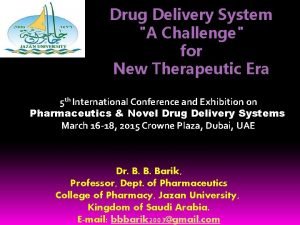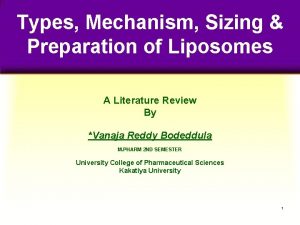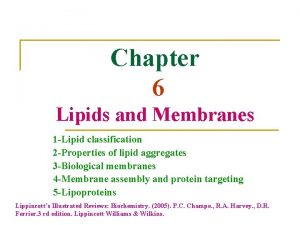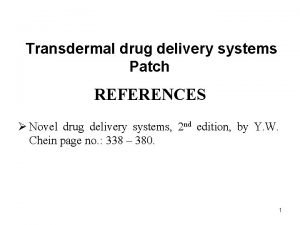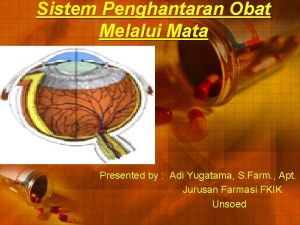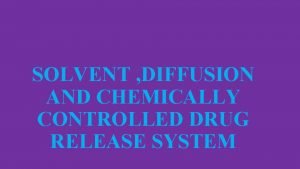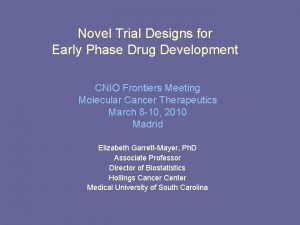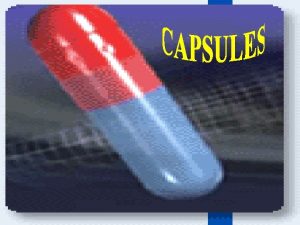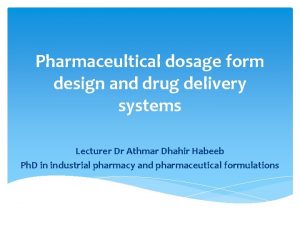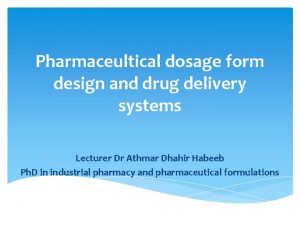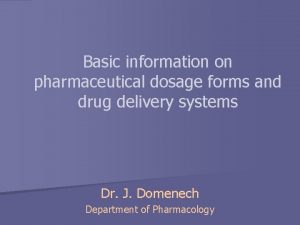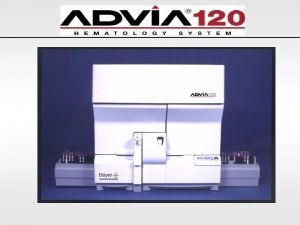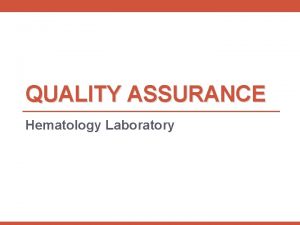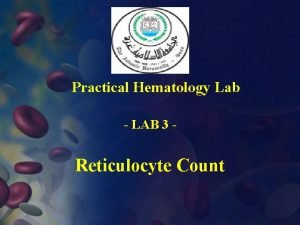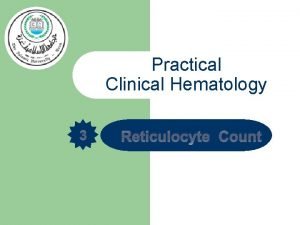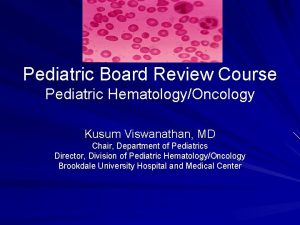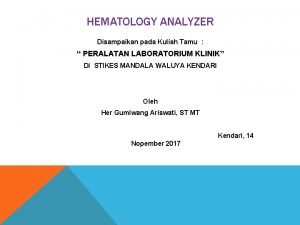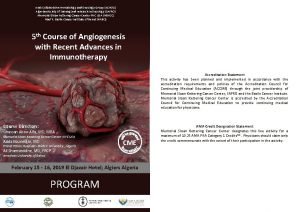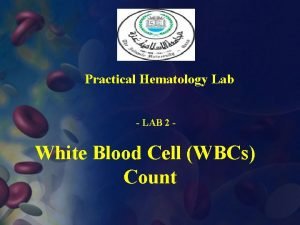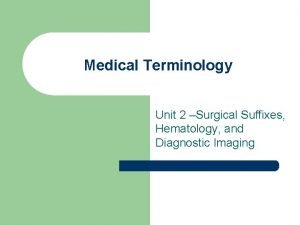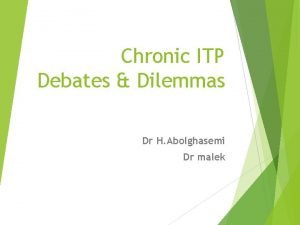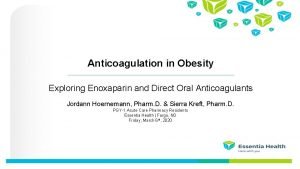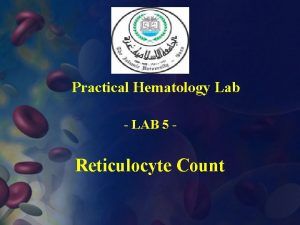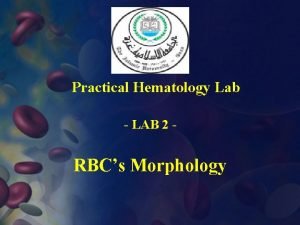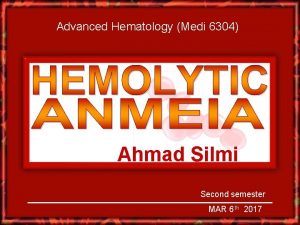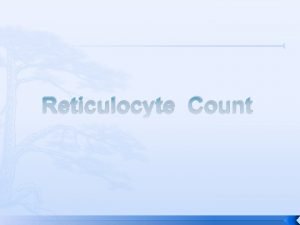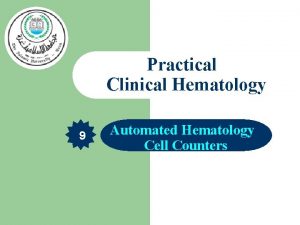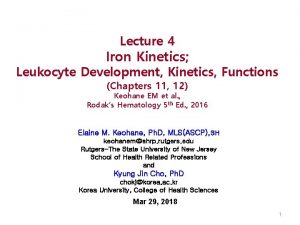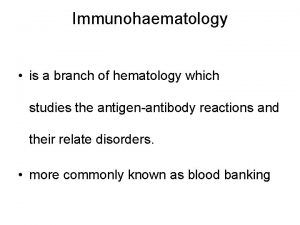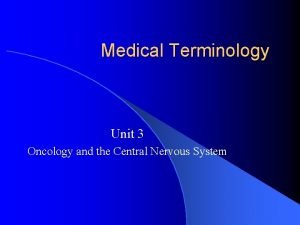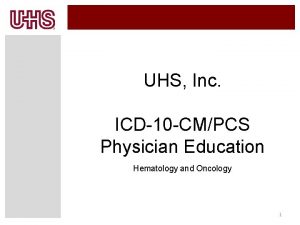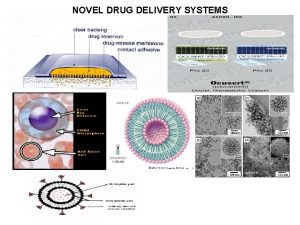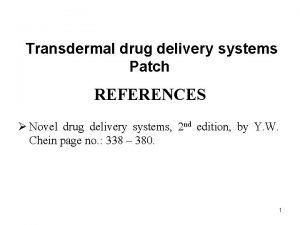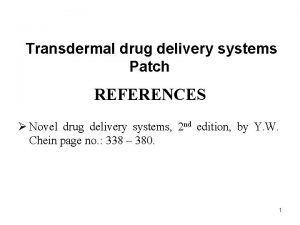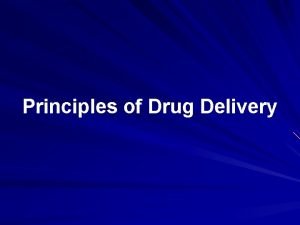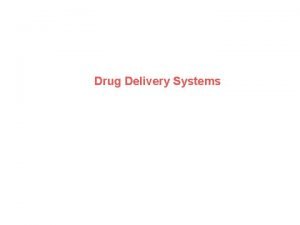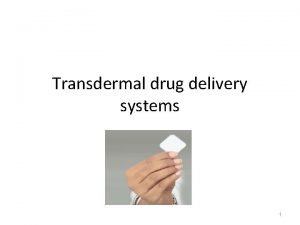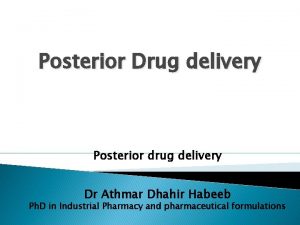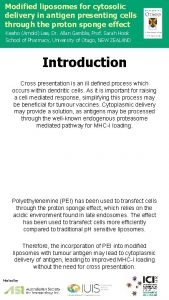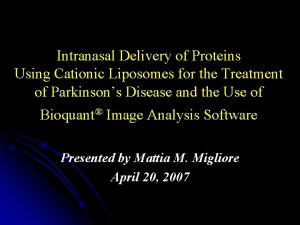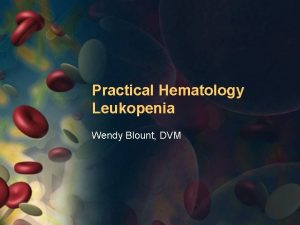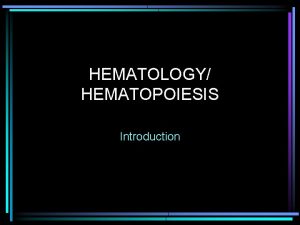Hematology Seminar Liposomes A Novel Drug Delivery System










































- Slides: 42

Hematology Seminar Liposomes: A Novel Drug Delivery System Advised by Dr. Hassanshahi Presented by: Mahsa Rahgoshay

CONTENT

Drug Delivery System (DDS) Drug delivery refers to approaches, formulations, technologies, and systems for transporting a pharmaceutical compound in the body as needed to safely achieve its desired therapeutic effect

Drug Delivery System Conventional drug delivery system

Drug Delivery System Conventional drug delivery system Ø High Systemic concentration can be toxic Ø Low concentration can be ineffective Ø Periodic Administration Ø Non-Specific Administration

Novel Drug Delivery System (NDDS) Novel Drug Delivery System or (Controlled Drug Delivery System)

Novel Drug Delivery System (NDDS) Conventional drug delivery System Controlled drug delivery system

Novel Drug Delivery System (NDDS) Why do we need NDDS? üSustained and consistent blood level within therapeutic window

Novel Drug Delivery System (NDDS) Why do we need NDDS? ü ü ü ü Decreased dosing frequency. Reduced rate of rise of drug concentration in blood. Enhanced bioavailability. To achieve a targeted drug release. Reduced side effects. Improved patient compliance Low cost

Novel Drug Delivery System (NDDS)

Carrier-Based Drug Delivery System Nano Carrieres Used for Drug Delivery System

Definition of liposome ü Liposomes are consisted of single or multiple lipid bilayers formed by hydrophilic and hydrophobic interactions ü Their diameter ranges from 80 nm to 100 um aqueous spaces

History of liposome Alec Bangham, a leading hematologist who was known as the father of liposomes

Basic Component Of Liposome 1) Phospholipids

Basic Component Of Liposome 2) Cholesterol decreases the permeability of the bilayer stabilises the liposomes keep the intended drug entrapped

CLASSIFICATION OF LIPOSOME Based On Size and Shape MLV OLV Multi lamellar vesicles (>100 nm) Oligo lamellar vesicles (0. 1 -1 m) ULV Uni lamellar vesicles MVV Multi vesicular vesiculed (>0. 5 m) SUV LUV Small uni lamellar vesicles (20 -100 nm) Large uni lamellar vesicles (>100 nm)

CLASSIFICATION OF LIPOSOME Based On Size and Shape

CLASSIFICATION OF LIPOSOME Based On liposome loading techniques passive loading techniques Mechanical dispersion method § • • • Sonication. French pressure cell: extrusion. Freeze-thawed liposomes. Lipid film hydration by hand shaking, non-hand. shaking or freeze drying. • Micro-emulsification. • Membrane extrusion Active loading techniques Detergent removal method Solvent dispersion method • • • Ethanol injection. Ether injection. Double emulsion vesicles. Reverse phase evaporation vesicles. Stable pluri lamellar vesicles • • • Dialysis. Column chromatography. Detergent adsorption method

Classification Of Liposome: Component and Application Conventional liposome ü the first generation of liposomes to be developed ü Component: Natural phospholipids + cholesterol ü Application: To target REE system (liver metastasis، candidiasis، lishmaniasis) ü Disadvantage: rapid clearance from the blood stream by 1)opsonization of plasma components 2)uptake by macrophages of the reticuloendothelial system

Classification Of Liposome: Component and Application Long circulatory liposome Liposome (LCLs) 1)coating the liposome with a hydrophilic polymer (PEG) Stealth liposome 2) Use of neutral lipids with a high TC like Cholesterol and sphingomyelin Advantage: reducing invivo opsonization and the rapid uptake by RES These liposomes have a very long circulation half life, of up to 40 hours Disadvantage: offsetting reduction in the ability to interact with the intended targets

Classification Of Liposome: Component and Application Long circulatory liposome Liposome (Stealth Liposome) PEG (PEG) Stealth Liposome

Classification Of Liposome: Component and Application Cationic liposomes Application: ü delivery of macro molecules that have a negative charge includes the delivery of DNA and RNA ü Non viral vectore for gene delivery Disadvantage: toxic in high doses and a short lifespan, thus restricting them to local administration.

Classification Of Liposome: Component and Application Cationic liposomes DNA

Classification Of Liposome: Component and Application Immunoliposome Ab Component: Conventional liposomes (CL) or Long Circulating Liposomes (LCL) + m

Classification Of Liposome: Component and Application Temperatures Sensitive Liposome (TSL) Component: lisophosphid or Palmitoyl glycero-3 -phosphocholine Temperature-sensitive liposomes for doxorubicin delivery

Classification Of Liposome: Component and Application PH Sensitive Liposome Ø Component: phosphatidyl ethanolamine (PE), oleic acid (OA) cholesterol hemi succinate Ø These liposomes fuse with cells when the p. H is low, thus releasing its content into the cell cytoplasm

Preparation Of Liposome General methods of preparation. Drying down lipids from organic solvent Dispersing the lipid in aqueous media Dispersing the lipid. Purifying in aqueouthe mediaresultant liposome. Analyzing the final product

Liposome Characterization Evaluation of liposome üMean vesicle size and size distribution üVesicle shape üLamellarity üSurface charge üSurface PH üEntrapment efficiency (EE) üDrug Release

Application of Liposome LIPOSOMES AS DRUG DELIVERY VEHICLES ü liposomes can mimic biological cells so they are highly biocompatible، biodegenerable، non toxic، non immunogenic. ü Dispersing the lipid in aqueou ü Antibacterial drugs ، antiviral drugs، antiparasite drugs، fungicides، enzymes ، anti cancer drug media ü Positive Effects of liposome on drugs: § Improve pharmacokinetic and pharmacodynamics effect § Enhanced drug solubilization (amphotericin B, minoxidil, paclitaxel, cyclosporin), § Protection of sensitive drug molecules and Increase half life of drug (cytarabine) § Entrap both hydrophilic and hydrophobic drugs

Application of Liposome LIPOSOMES AS GENE DELIVERY VEHICLES. Dispersing the lipid in aqueou media

Drug Targeting To Tumor The tumor targeting consists in “passive targeting” and. “active targeting

Passive Targeting: EPR Effect The vasculature of solid tumors different from that of normal vasculature 1) Leaky vasculature 2 ) dysfunctional lymphatic drainage

Passive Targeting: EPR Effect Enhanced Permeability And Retention (EPR) Effect

Passive Targeting: EPR Effect The problems associated with passive targeting include: Ø High interstitial fluid pressure (IFP) in most solid tumors Ø Lack of angiogenesis in big solid tumor

Passive Targeting: EPR Effect The EPR effect is influenced particle size, shape, and surface charge: ü PEGylated nanoparticles ü Nano particles smaller than 100 nm ü Nano particle with negative surface charge circulate longer in blood

Passive Targeting: PH Sensivity ü tumor cells use glycolysis to acquire extra energy, producing an acidic environment ü The p. H-sensitive liposomes are designed to be stable at a physiological p. H of 7. 4 but are degraded the acidic environment of tumor cells

Liposomal Drug Marketed liposomal-based therapeutics and products in clinical development Drug Disease Status Type of liposomal-based drug delivery Daunorubicin Leukemia and solid tumors FDA Approved in 1996 Conventional Doxorubicin (DOXIL) Leukemia, breast cancer, bone cancer, lung cancer, brain cancer FDA Approved in 1995 PEGylated Annamycin Acute lymphoblastic leukemia (ALL) Phase I/II Conventional Tretinoin Acute promyelocytic leukemia (APL) Phase II Conventional Vincristine Non-Hodgkin lymphoma FDA Approved in 2012 Conventional Mitoxantrone LEM-ETU Acute myeloid leukemia Phase I Cationic Doxorubicin and bortezomib Relapsed or refractory multiple myeloma FDA Approved in 2007 PEGylated

Liposomal Drug Myocet Liposome–encapsulated doxorubicin–citrate Component: Phospholipid and cholesterol Application: Drug delivery to Macrophage of RES system ü Low cardio- toxicity than free doxorubicin

Liposomal Drug DOXIL ü Developed in 1995 ü Liposome-PEG doxorubicin ü PEG (polyethylene glycol) makes the liposome less vulnerable to immune system ü Anti-cancer drug used in: Leukemia, breast cancer, bone cancer, lung cancer, brain cancer treatment of HIV-related Kaposi’s sarcoma، breast cancer, ovarian cancer ü Low cardio- toxicity than free doxorubicin

Dissadvantages of liposome Their rapid clearance from circulation due to uptake by RES system Less stable as phospholipids are easily susceptible to oxidation Leakage and fusion of encapsulated drug / molecules Short half life Low solubility Production cost is high

Niosome ü Similar to liposome in that way they are also made up of a bilayer lipid and can entrap both hydrophilic and hydrophobic drugs ü Component: non-ionic surfactant (Tween, Span ) + Cholesterol ü Advantage: storage of surfactants require no special conditions Less Expensive Non-ionic surfactant are safer and less toxic More Stable

 New drug delivery system
New drug delivery system Classification of liposomes
Classification of liposomes Liposomes vs micelles
Liposomes vs micelles Transdermal drug delivery system
Transdermal drug delivery system Ocular inserts
Ocular inserts Diffusion controlled modified release system consists of
Diffusion controlled modified release system consists of Novel clinical drug trial design
Novel clinical drug trial design Deliberate adulteration definition
Deliberate adulteration definition Dosage forms and drug delivery systems
Dosage forms and drug delivery systems Rate limiting steps in drug absorption
Rate limiting steps in drug absorption Dosage forms and drug delivery systems
Dosage forms and drug delivery systems Parenteral dosage form example
Parenteral dosage form example Advia 120 hematology system
Advia 120 hematology system Methodology.accenture.com
Methodology.accenture.com Unc chapel hill hematology oncology
Unc chapel hill hematology oncology Hematology laboratory procedures
Hematology laboratory procedures Rpi formula hematology
Rpi formula hematology Reticulocyte count using miller disk
Reticulocyte count using miller disk Pediatric board review course
Pediatric board review course Neotrofil
Neotrofil Premier oncology hematology management society
Premier oncology hematology management society Sucking tube in hematology
Sucking tube in hematology Tom root word
Tom root word Dic labs
Dic labs American society of hematology
American society of hematology Clexane mechanism of action
Clexane mechanism of action Hematology suffix
Hematology suffix Retic count
Retic count Bite cells
Bite cells Ellipocytosis
Ellipocytosis Hematology
Hematology Hematology
Hematology Formula for reticulocyte count
Formula for reticulocyte count Practical hematology
Practical hematology Hematology cell counters
Hematology cell counters Myeloblast
Myeloblast Branches of hematology
Branches of hematology Wbc differential
Wbc differential Dr. biren saraiya hematology
Dr. biren saraiya hematology Oncology meaning in medical terminology
Oncology meaning in medical terminology Hematopoietic drugs wikipedia
Hematopoietic drugs wikipedia Hematology day
Hematology day Uhs hematology
Uhs hematology
